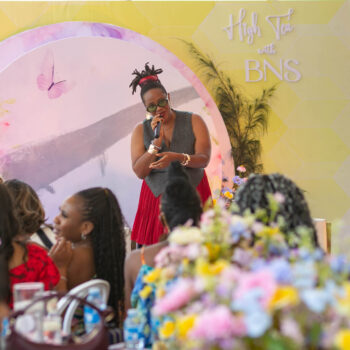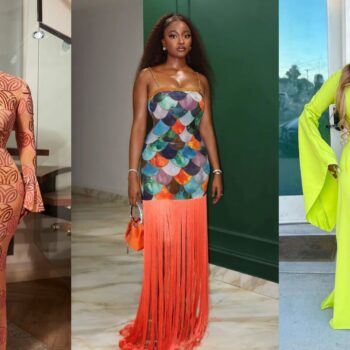
At age 18, after a 2-year attempt at becoming a top model, Edward Enninful was appointed Fashion Director of i-D, a position which he held for over two decades. Now almost 30 years into his career and 13 months as the Editor-in-chief of British Vogue, the Ghanaian is set to receive the CFDA’s Media Award on the 4th of June.
Edward’s biggest feat as Editor has been pushing the conversations of inclusivity and diversity in the fashion industry. According to him, Diversity for me is not just about skin color but of perspectives. It should be part of the language of the magazine always. That’s just what the world is.
In an exclusive interview with Vogue, Edward Enninful talks about the journey so far from his modelling days to his first big break. Read the excerpts of the interview below.
His first shoot as a model
It was an advertorial for Pepe Jeans, shot by Nick Knight in Richmond Park. I was there lying under a tree, and there were ants. Suddenly, I was covered in ants and was too scared to say anything. I’d met Kate [Moss] at the casting. I was 16, and she was 14, and that’s when I met [the director] Steve McQueen—he was modelling for Pepe at the time as well. Steve was 18—because he went to Goldsmith’s to study, I followed him later. Though I dropped out. I already knew that what I was doing in fashion was my calling.
On being appointed as i-D’s Fashion Director at 18
The good thing about being around from an early age is that I knew all the models, and I always used who I wanted—it didn’t matter the shape, colour, socioeconomic background. I’ve always been like that. The trendiest girl of the moment might be an Eastern European girl, but I was always, “Oh, I’ll have Alek Wek! Or Naomi. From an early age, I saw beauty in all women. I come from Africa—my mother and my aunts were big and curvy and beautiful, so the idea of skinny being the norm was weird for me.
His first big American break
The first campaign I had as a stylist was at Calvin Klein, in 1996. Grunge was still going on, and London photographers—Corinne Day, David Sims, Craig McDean—had already been embraced by New York. The creative director of Calvin, Ronnie Newhouse, had just moved to London and loved the work I’d been doing with Pat McGrath and Eugene Souleiman in i-D, so she booked us. So there we were, like hillbillies. I’d never seen anything like the scale of it before. I remember being stuck in a room with Kate Moss for days and evenings. I was meant to do eight looks, and I did like a show’s worth. And Kate being like, “Let’s go out!”.
Facing discrimination as a young boy
I had four brothers at school, so I didn’t feel it! Once or twice, there were people shouting things about being gay, but it didn’t upset me. Yes, later on in the industry I knew what racism was, but I was quick to fight. Nobody was going to stop me doing what I wanted to do. Terry and Tricia Jones, giving me the fashion editorship of i-D when I was 18, what can I say? I mean I worked very hard, I was very shy, but I just got on with it. I just did. I did the magazine myself, didn’t even have an assistant. I wrote. It’s not like kids today, who want to know if there’s money in it. I just had to do it. It was like a calling. I remember walking from Ladbroke Grove to do returns—and just being happy about it.
Read the full feature on www.vogue.com




